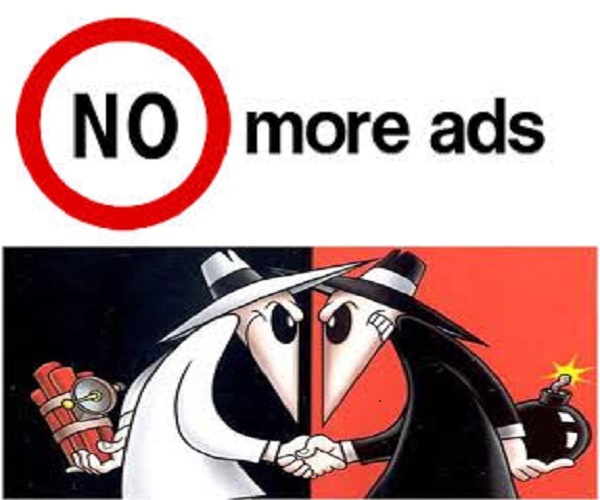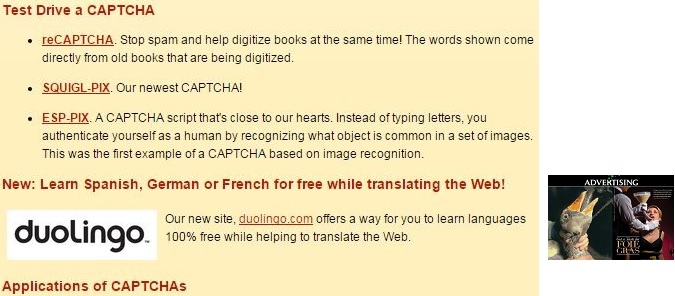History buffs may liken this situation to the spy-and-counter-spy among countries. It surely seems to us at Technology Bloopers to be a great waste of resources and a great inconvenience to the more than 3 billion current users of the Internet today. Most users have already been spoiled by the “free” goodies they enjoy in return for their viewing increasing volumes of advertising. This arrangement has been around for at least 150 years in newspaper and magazine publishing, although most of the important hard-copy publications make their revenue from a combination of subscription fees and advertising purchases. By contrast, the much more recent Internet is mostly free to users and paid for by advertisers. Some interesting exceptions are Wikipedia, language-learning site Yabla, and purchase or rental of plugins and themes for WordPress. In the opinion of Technology Bloopers, there are many Internet sites for which users would pay reasonable fees, which would reduce the conflict among the titans of Silicon Valley. Google has contributed great gobs of technology but financed it heavily with ads. But users have had their fill of ads, leading to a rapid growth of ad blocking software. And some of the ads are so intrusive (the ones on SpanishDict.com are the worst in our experience, interrupting users with highly-distracting audio and video) that they cry out for ad blockers … and boycotting of such sites in favor of more ones that are less obnoxious. The advertisers have been spooked by this software, leading to a rapid growth of software that undoes the blocking. Most recently Apple has jumped into the fray with its own ad blockers, which is a welcome counter-force, though actually Apple has its own ads buried in its Apps, so the only beneficiary is Apple, while Google loses business and consumers continue to be annoyed by ads.
Tag Archives: Advertising
The Most Insidious Advertisement We’ve Seen (So Far)
Few would dispute the great usefulness of Google search. And most of us are willing to put up with the numerous ads that come along with the content. They are usually a small price to pay for the convenience and completeness of the information we seek. And we rarely have a choice of ads + free content vs. paid content. Sometimes the ads are distracting and/or invasive (especially ones with audio, video, or animation). But perhaps the worst ads are the ones that don’t look like ads at all. For example, the one in the graphic above, which is formatted to look just like the usable content itself. This strains the limits of ethics; at least in paper periodicals the advertisements are either clearly advertisements (as is easily seen by their formats) or are clearly labeled “ADVERTISEMENT”. Unless you truly need the content you found, we urge you to peruse other, more ethical, websites for your information needs. (It was interesting that we found this on a website dealing with CAPTCHA’s, which is another phenomenon of dubious merits.)
Allí no hay ni almuerzo grátis (inglés:“There ain’t no free lunch”)
 Most Internet users have been spoiled by so much apparently “free” content. Well, of course it’s free to them because advertisers are paying for it, and are putting ads next to that content, just like newspapers and magazines have done for many decades. However, some of the same sort of technology that have brought us all this cornucopia of useful (or at least entertaining) content, is now being employed to strip the ads off this content, as described in some detail by The Financial Times.
Most Internet users have been spoiled by so much apparently “free” content. Well, of course it’s free to them because advertisers are paying for it, and are putting ads next to that content, just like newspapers and magazines have done for many decades. However, some of the same sort of technology that have brought us all this cornucopia of useful (or at least entertaining) content, is now being employed to strip the ads off this content, as described in some detail by The Financial Times.
Google itself has already (very recently) started a small initiative that lets people pay to watch YouTube videos sans ads. Those are all or mostly for mass market entertainment content, so the cool creative stuff (“coolness” is in the eye of the beholder, so even cat videos count here) may still be afflicted with ads. But we suspect that millions of people would be willing to pay reasonable amounts of subscription money to use sites they value. One proof of that is the large total contributions per year that are made to support Wikipedia. So we can hope that other sites with value-added start to offer alternatives like this new one from Google.
The worst ads are ones that have video (or animation) or audio, which are REALLY intrusive. One of the worst sites in this regard that we personally use is spanishdict.com. (But despite this unpleasant behavior, spanishdict.com, is highly-ranked by Alexa, 1,818 in the world as of May 14, 2015 with a whopping 907 improvement in the preceding three months.) Ironically, when one narrows the viewing window, the ads—which are mostly on the right side—get chopped off. No wonder they have to resort to using audio, video, and animation to attract attention.


